Published:
A health-led strategy to tackle problem drug use in Ireland
Lead Researcher: Brian Galvin, HRB Evidence Centre
In Summary
National drugs strategies must develop over time to meet the needs of people and communities who are affected by problem drug use. The HRB gathered data on drug use and deaths in Ireland and commissioned research on evidence to inform the latest National Drug Strategy, which adopts a health-led approach and puts an increased emphasis on supporting recovery.
The Problem
In order to work, national drug strategies need to be planned based on evidence about the use of illegal drugs and problem substance use. The nature and pattern of drug use changes over time, which means that drug strategies need to evolve.
The Project
The HRB gathered data on illicit drug use in Ireland, including treatments and reported deaths. The HRB commissioned the Centre for Public Health at Liverpool John Moore’s University to prepare a trends analysis on the drugs situation in Ireland and a report on the most recent international evidence on responses to problem drug use. The findings provided evidence for planning drug strategy in Ireland for coming years and Brian Galvin from the HRB Evidence Centre worked closely with the Department of Health to draft the new strategy.
The Outcomes
HRB research helped to shape The National Drugs Strategy. ‘Reducing Harm, Supporting Recovery’ outlines the Government’s responses and actions to tackle problem drug and alcohol use in Ireland between 2017 and 2024.
The strategy looks to provide an integrated public health approach.
The strategy supports harm reduction and places a greater emphasis than previously on supporting a health-led response to drug and alcohol use in Ireland.
Brian Galvin, Head of Ireland’s Focal Point for the European Monitoring Centre for Drugs and Drug Addiction at the HRB, says:
'In order to plan a national drugs strategy it is very important that we know what the trends are in the types of drugs that are being used and the levels of harm being caused. By bringing together that data and working with international experts and the Department of Health we were able to shape the latest strategy, which not only looks to reduce harm but also puts an emphasis on education and recovery'.
